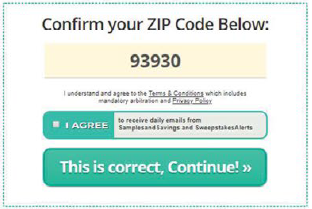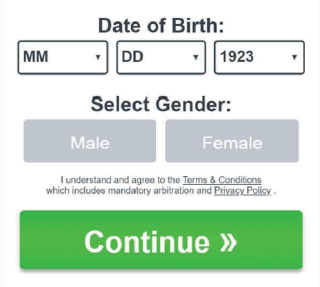Ninth Circuit Provides Guidance Regarding Online Contract Formation
Summary
In a recent decision upholding the denial of a motion to compel arbitration, a panel of the Ninth Circuit provided new guidance about the formation of online contracts under California and New York law.1 The court held that, to place a consumer on inquiry notice of terms and conditions on a website, the website must provide “reasonably conspicuous” notice of the terms and the consumer must “unambiguously manifest[]” acceptance of those terms. In the course of its analysis, the court provided several examples. Berman follows on the heels of a recent California state appellate court decision, Sellers v. JustAnswer LLC, 73 Cal. App. 5th 444 (2021), that similarly concluded that a company had failed to provide “sufficiently conspicuous” notice of its terms. Businesses that seek to enter into online contracts with consumers in California and New York—especially when their terms include arbitration agreements with class waivers—should consider reviewing their current website flows in light of these decisions.
Background
One of the defendants in Berman, Fluent, Inc., is a digital marketing company that offers rewards to consumers who provide it with contact information that the company then uses in targeted marketing campaigns.2 The plaintiffs were several consumers who visited Fluent’s websites and alleged that they subsequently received unsolicited telephone calls and text messages in violation of the Telephone Consumer Protection Act.3 The plaintiffs filed a class action against Fluent and other companies involved in the alleged marketing campaigns. The defendants moved to compel arbitration, arguing that when the plaintiffs provided their information to Fluent on its websites, they had consented to Fluent’s terms and conditions (“Terms”), which included an arbitration provision.4 The relevant portions of the webpages (as reproduced in the Berman opinion) appeared as follows:
Webpage 1:

Webpage 2:

Id. at Appendices A and B.
The defendants argued that in each instance, by clicking the “Continue” button, the plaintiffs had agreed to the Terms, including the arbitration provision, which were referenced and linked above the “Continue” button.5 The district court denied the defendants’ motion, concluding that the webpage layout did not sufficiently indicate to the plaintiffs that clicking the “continue” button constituted agreement to the Terms. The defendants appealed.6
The Ninth Circuit’s Decision
Choice of Law and Categories of Online Contracts
As a threshold matter, the court declined to decide whether New York or California law governed the dispute, concluding that both states’ law would follow the same path: in the online context, “if a website offers contractual terms to those who use the site, and a user engages in conduct that manifests her acceptance of those terms, an enforceable agreement can be formed.”7 The court described the now-familiar spectrum of online consumer agreements, with the “browsewrap” concept at one end (inferring a consumer’s consent from use of the website alone) and “clickwrap” at the other (securing affirmative consent from a consumer by providing the terms and conditions themselves, or a link to them, with a checkbox for the consumer to click to consent).8 Generally speaking, courts are more likely to enforce clickwrap agreements than browsewrap agreements.9
The Ninth Circuit’s Test
Building on its prior decision in Nguyen v. Barnes & Noble, Inc.10 and the Second Circuit’s decision in Meyer v. Uber Technologies,11 the Berman court articulated the following test for a consumer’s assent to online contract terms: Unless the business can demonstrate that the consumer has actual knowledge of the terms, (1) the website must provide “reasonably conspicuous notice” of the terms, and (2) “the consumer must take some action … that unambiguously manifests his or her assent to those terms.”12 The court concluded that the defendants had not met either prong.13
Reasonably Conspicuous Notice
In explaining the first element of the test, the court stated that users “are entitled to assume that important provisions – such as those that disclose the existence of proposed contractual terms – will be prominently displayed.”14 Citing Sellers, the court went on to say that the “onus” is on businesses to notify consumers of those terms.15 Significantly, Berman does not say that all of the terms themselves must be “reasonably conspicuous” or “prominently displayed,” but instead only that notice of the existence of those terms must be presented that way. The court also underscored that the existence of a hyperlink to terms must be “readily apparent.”16
In applying these principles to Fluent’s website, the court made several observations that may provide relevant guidance to businesses going forward:
- The notice must appear “in a font size and format such that the court can fairly assume that a reasonably prudent Internet user would have seen it.”17 The language in “tiny gray font” referencing Fluent’s Terms, surrounded by much larger text and other visual elements, did not meet this standard, as, in the panel’s view, it was “barely legible to the naked eye.”18
- Simply underlining a hyperlink, as Fluent did, will “often” be insufficient to provide adequate notice, according to the court, and the business “must do more” than underlining to set the link apart from the surrounding text.19 The panel suggests that putting the link in (1) a different colored font (typically blue) and/or (2) all-caps are examples of ways to sufficiently alert users to the existence of linked terms.20
Unambiguous Manifestation of Assent
As to the second element, the court stated that a user’s clicking a button will only constitute the necessary unambiguous manifestation of assent “if the user is explicitly advised that the act of clicking will constitute assent to the terms and conditions of an agreement.”21 The court observed that while Fluent’s webpages did have language that stated that the user agreed to the Terms, there was no language explicitly tying acceptance of the Terms to clicking the “Continue” button.22
As illustrative guidance, the court proposed language such as “By clicking the Continue>> button, you agree to the Terms & Conditions.”23 This language (or language like it) could appear near the button or on the button itself.24 And while the court did not mention a checkbox as another option in that passage, the court’s implicit approval of “clickwrap” agreements earlier in the opinion—as well as extensive case law on the subject—makes it highly likely that providing such language next to a checkbox that the user must click to move forward would also satisfy this element.
The Concurrence
Judge M. Miller Baker of the United States Court of International Trade (sitting by designation) wrote a detailed concurring opinion. Judge Baker considered choice-of-law issues critical, concluding that those issues should have been resolved in favor of selecting California law. He went on to discuss California law in detail, primarily focusing on Sellers. Reaching the same ultimate conclusion as the majority, Judge Baker found it significant that, under Sellers, an additional element to consider is whether the consumer is engaged in a “one-off” transaction or involved in a continuing relationship (such as an automatically-renewing subscription). A “one-off” transaction—such as that in Berman, for a single gift card—will receive higher scrutiny as to the consumer’s notice and assent, because (in the view of the Sellers court) a consumer would be less likely to expect an accompanying contract than in the context of an ongoing relationship (which generally is understood to require terms and conditions).
Takeaways
The test in Berman does not break new ground or establish a fundamentally different standard than courts in California and New York have previously applied, but it does offer guidance about particular methods of contract formation that businesses should review and consider when implementing their own online terms and conditions—especially when they include arbitration agreements that call for individualized arbitration rather than class actions. At a minimum, Berman gives companies tools they can use to increase the likelihood of enforcing online terms and conditions:
- Use language that states that by checking a checkbox, or clicking a particular button, the consumer is agreeing to the business’s terms and conditions.
- Ensure that this language is directly adjacent to the checkbox or button, and is not in a substantially smaller font size or otherwise markedly less visible (such as by the choice of font color) than the website features around it.
- If a hyperlink is used to provide the user with access to the terms and conditions, have the hyperlink both (1) underlined and (2) either in a different color (ideally the “traditional” hyperlink blue font) or in all caps.
For more information about the topics raised in this Legal Update, please contact any of the following members of our Consumer Litigation and Class Actions Practice: Michael Jaeger, Archis Parasharami, and Kevin Ranlett.
1 ___ F.4th ___ (9th Cir. 2022), Case No. 20-16900, 2022 WL 1010531 ("Berman").
6 The defendants also appealed the denial of a motion for reconsideration of the decision (id. at 7) on grounds not relevant to this Legal Update. (The Ninth Circuit affirmed that denial as well. Id.)
8 Id. at 4-5. Berman describes “clickwrap” agreements as having “specified contractual terms on a pop-up screen” with a checkbox (id. at 4), but “clickwrap” is generally considered to also encompass linked terms and conditions (without a “pop-up”). See, e.g., Sellers, 73 Cal. App. 5th at 463 (“A ‘clickwrap’ agreement is one in which an internet user accepts a website’s terms of use by clicking an ‘I agree’ or ‘I accept’ button, with a link to the agreement readily available.”)
10 763 F.3d 1171 (9th Cir. 2014).




